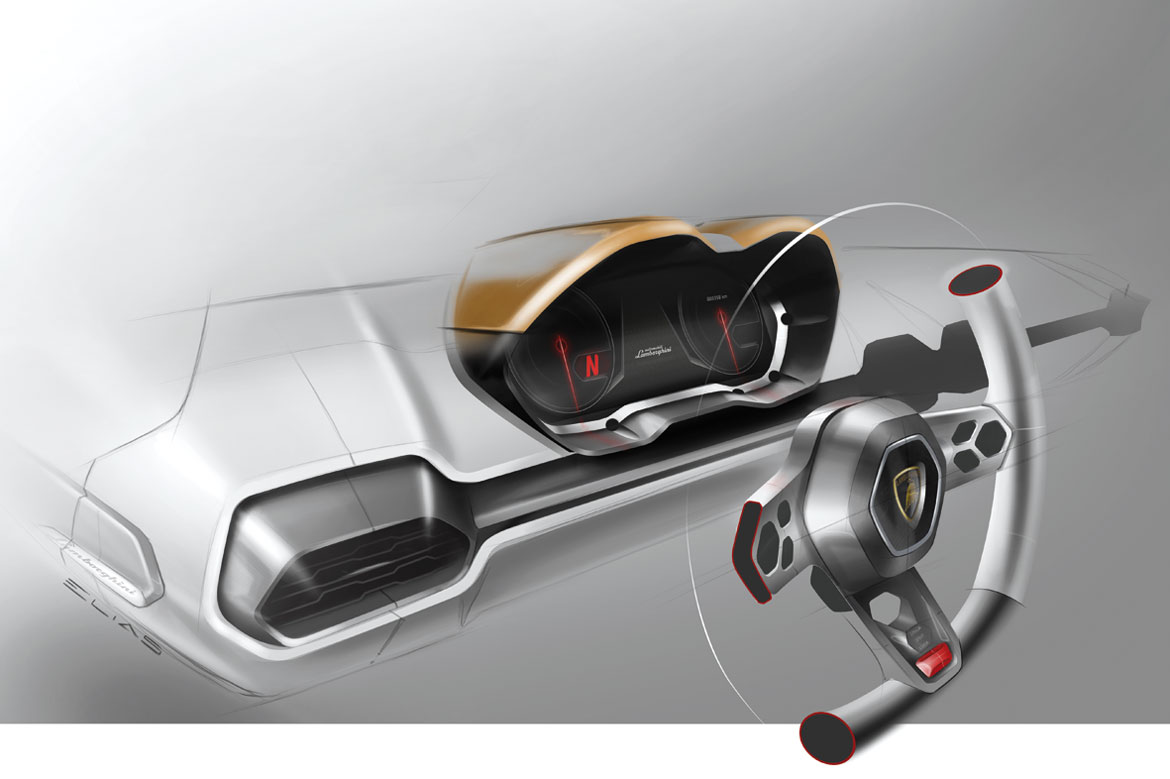POWER IN A VELVET GLOVE (Auto&Design no.210)
Named after Minotaur, a creature from Greek mythology with the head of a bull on the body of a man, the Lamborghini Asterion is based on the Aventador platform and employs the same monocoque, subframe and suspension. But to mark the arrival of a new plug-in hybrid powertrain, design boss Filippo Perini decided to develop a unique form language for the vehicle — one that recalls the Sant’Agata-based company’s heritage whilst also looking ahead into the brand’s future.
“We decided to create a new dress when we tested the car for the first time,” says Perini. “The car was delivering power in a very elegant way.” Perini notes that in a normal rear-wheel-drive Lamborghini the occupants feel pushed by the car’s power, while in the Asterion they feel pulled. “For this reason we decided that this car needed a new dress, a dress that is much more classic, much more GT, and inspired by the Miura.”

The Miura-inspired elements can be seen in the front fender and when viewing the car from the rear three quarters, but there are also similarities to the Huracan in the rear bumper and diffuser section, and the taillamps echo those of the Veneno. The Asterion’s proportions, however, are totally different.
The Asterion also references iconic GT cars from Lamborghini’s past. Perini is quick to point out that Lamborghini started as a company producing GT cars, citing the 350GT in particular. Later Ferrucio Lamborghini built cars such as the Espada, Jalpa and Urraco, all of which informed the company’s design direction.
“We were taking inspiration from our heritage,” says Perini. “As a company, we have an identity in [GT] cars like this. This is an example of pure Italian design.”

The cabin, though adorned with traditional materials such as natural leather, is one area that is thoroughly modern in its approach. Entry is gained via brushed aluminum door handles that reflect Italian craftsmanship and have a nice tactile quality. Once inside the occupants are greeted with a lavish display of high-grade materials and colorways that are more of a nod toward haute couture than extreme supercar.
The interior architecture is very close to Huracan, with a horizontal, symmetric dashboard and a longitudinal tunnel that, in this case, houses the car’s battery pack. “What we did was to improve the ergonomics to have better roominess,” says Perini. “We reduced the dimension of the rocker to have a better [ingress and egress] and we have a more comfortable seat.”
Technology is apparent everywhere, but especially on the TFT screen ahead of the driver (which has three graphic layouts – Sport, Corsa, and electric mode) and the removable touchscreen pad at the base of the center stack. It contains all of the car’s information and can be held by the passenger should they wish to watch movies while the pilot drives.

Since the Huracan appeared earlier this year it appears Lamborghini is embarking on a new, softer design aesthetic – one that eschews the angular and aggressive forms of its current models. So what does this mean for the future of Lamborghini’s design language?
“This design language is not something that will change our identity,” says Perini. “We will continue to produce really extreme supercars. But our goal is to understand if this design language will be appreciated by a different kind of customer. We want to understand if this is a car we can produce or if it has to remain a concept car.”
The article continues in Auto & Design no. 210










